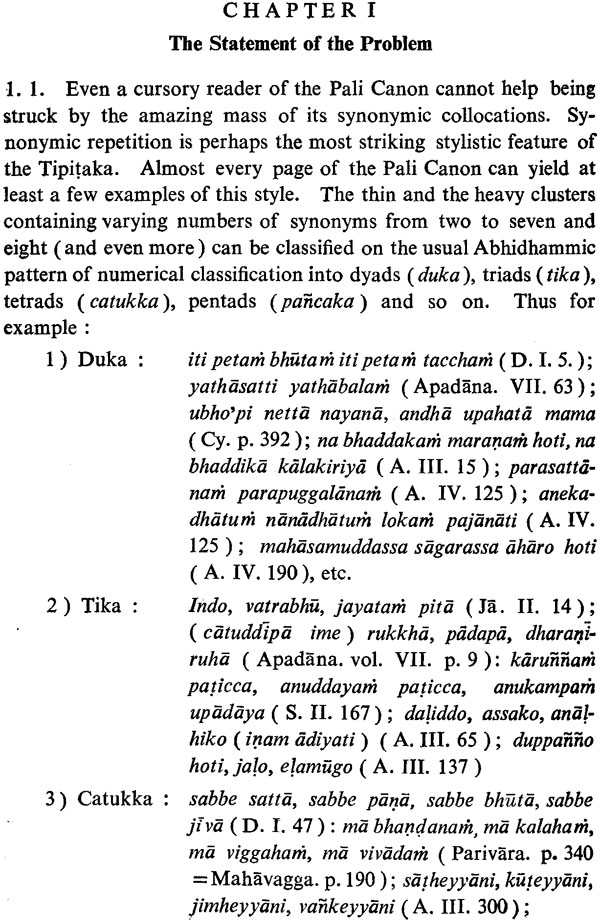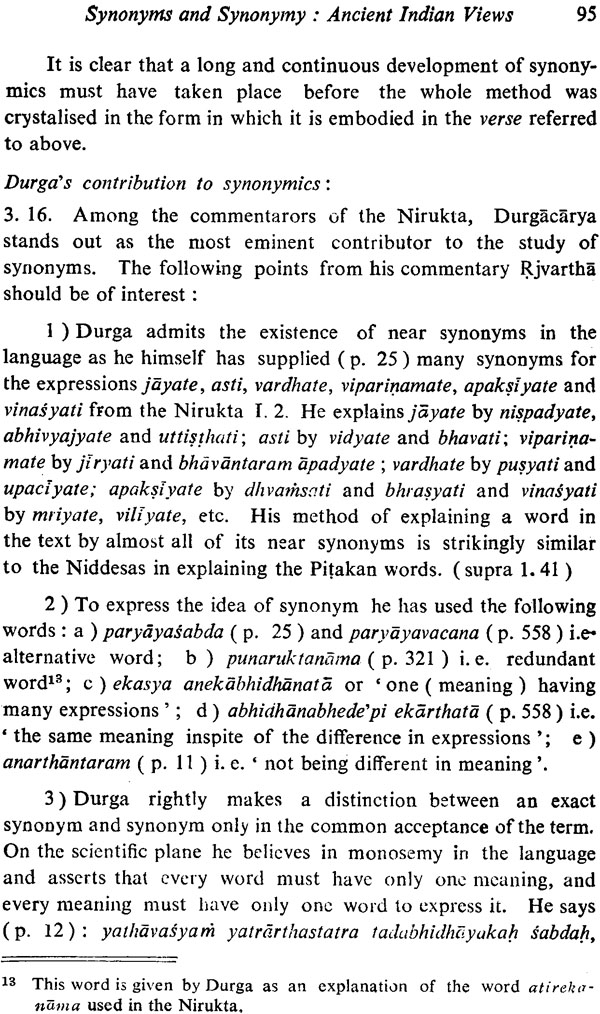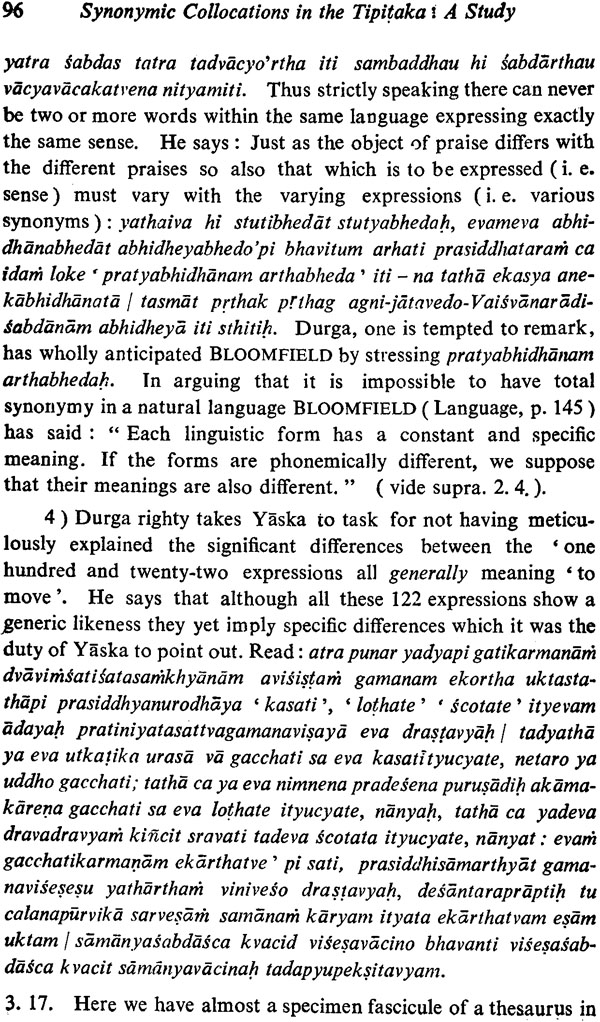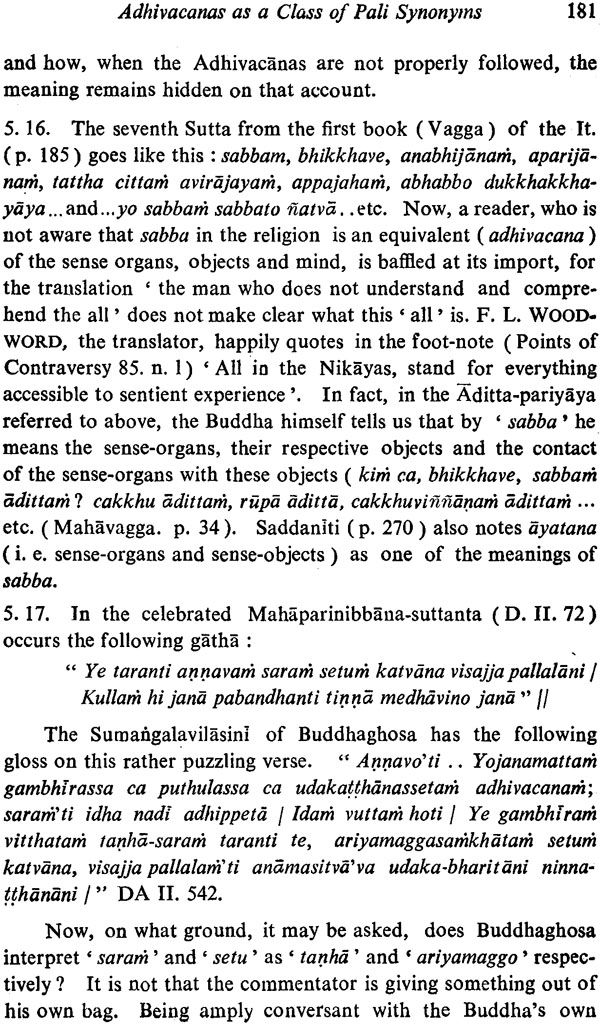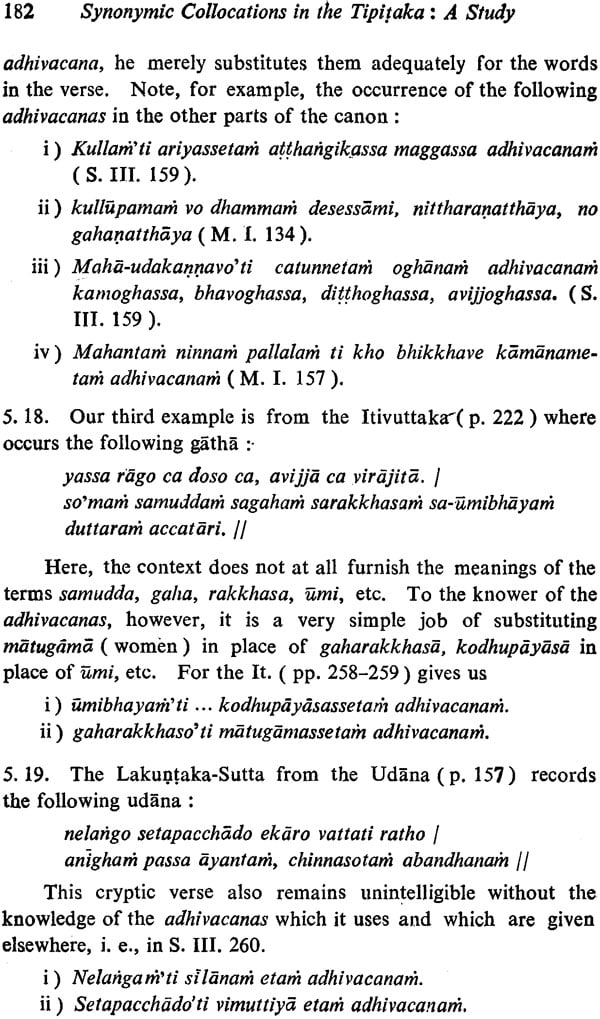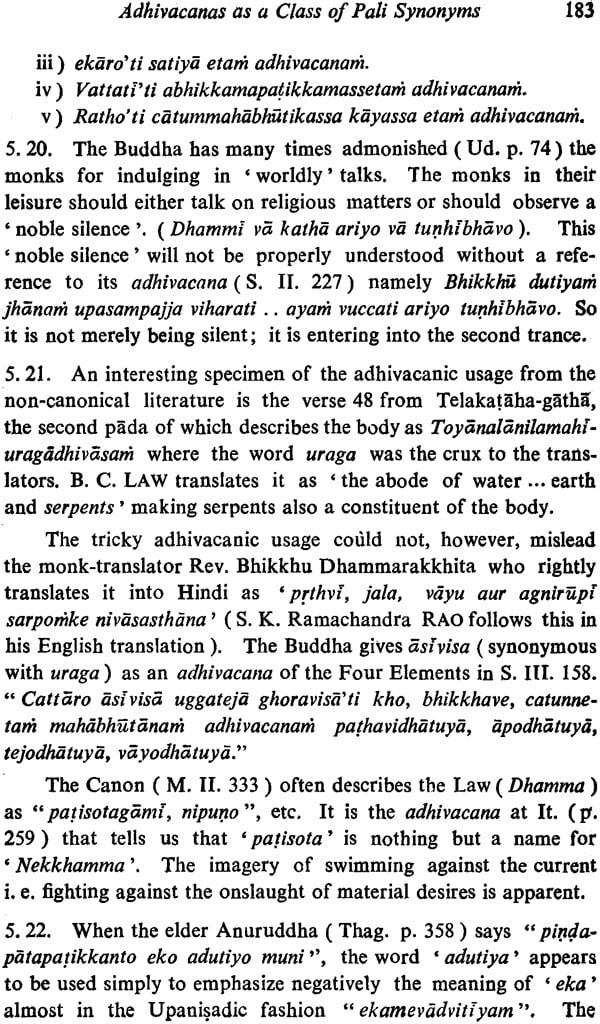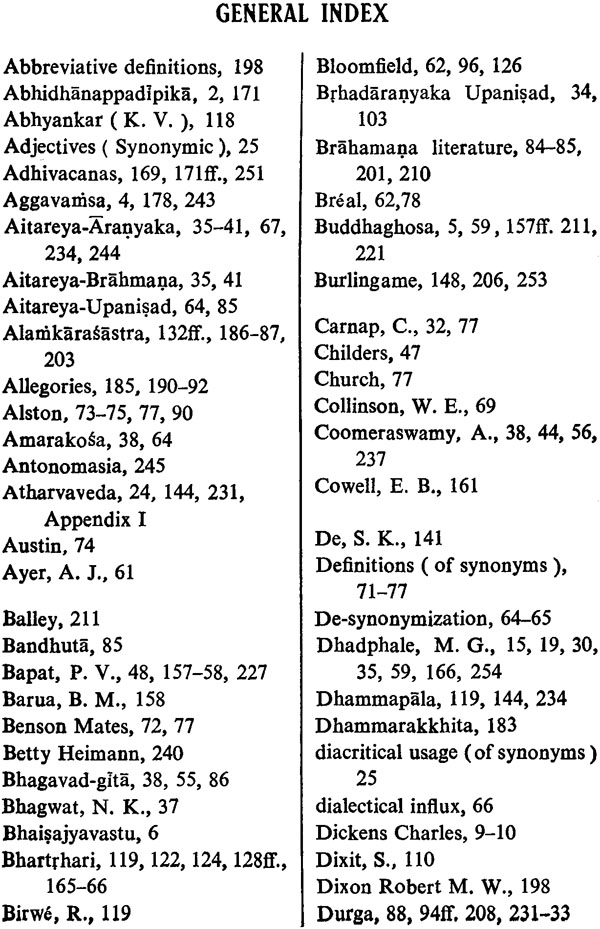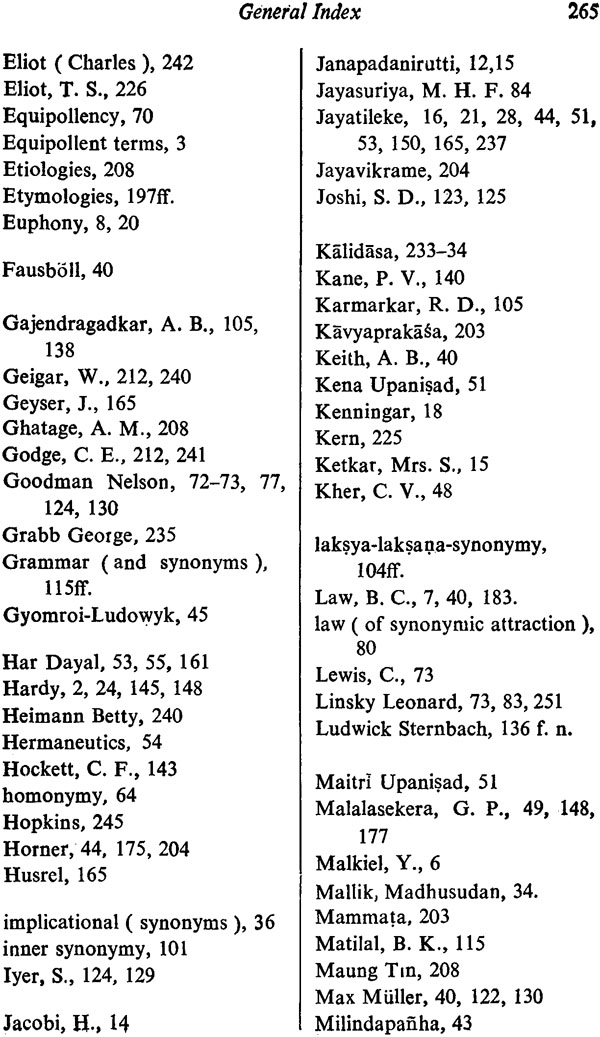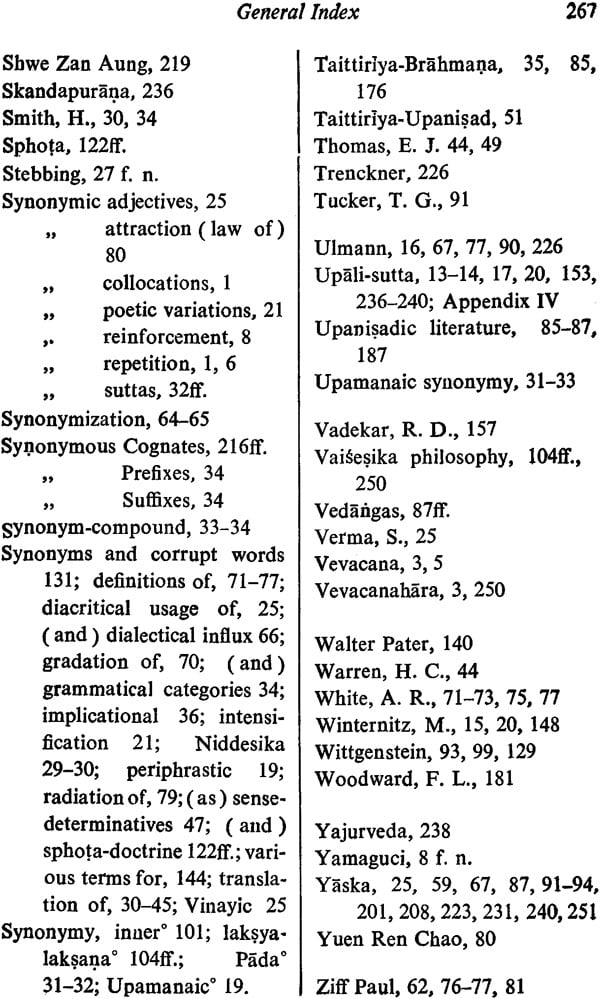
Synonymic Collocations in The Tipitaka: A Study (An Old and Rare Book)
Book Specification
| Item Code: | NAM774 |
| Author: | M. G. Dhadphale |
| Publisher: | Bhandarkar Oriental Research Institute, Pune |
| Language: | English |
| Edition: | 1980 |
| Pages: | 200 |
| Cover: | Hardcover |
| Other Details | 8.5 inch X 5.5 inch |
| Weight | 200 gm |
Book Description
This book represents my dissertation which was accepted by the University of Poona in 1976 for the Degree of Doctor of Philosophy.
The title 'Synonymic Collocation in the Tipitaka: A Study indicates the subject and outlines the scope of the dissertation. The work attempts to discuss the main aspects of the synonymic clusters in the Tipitaka.
Boasdly speaking such synonymic (or semi-synonymic, for there scarcely exist exact synonyms in a natural language) expressions can be studied from three different points of view, viz. (1) stylistic, (ii) semantic, and (iii) lexicographic. In the present work the emphasis is mostly on the first; the second is discussed only in brief, and the third is merely indicated en passant.
The whole work is divided into three sections comprising in all nine chapters, not all of equal length. A prefatory note is added to the second section where it is most essential. The first section is Introductory and includes the statement of the problem, the theories-both ancient and ancient and modern – of synonymy, and the aid of the Pali commentaries and the other exegetical literature in explaining the vevacanas. The second sections concerns some peculiar synonymic resources of Pali. The third section is Residual and consists of only two chapters, one of which discusses the synonymous epithets in the Canon in relation to the early Buddhist mythology and the other state only the formal conclusion of the work.
The scope, the method, and the value of the study have been explained, rather unusually, at the end of the first chapter which state the problem in full. This comprehensive chapter renders a long preface unnecessary. It was thought more appropriate to explain the method, the scope, and the value of the study only after the problem had been fully unfolded. Hence their inclusion at the end of the first chapter.
It now remains to record my thanks to all those who have helped me. My best thanks are due to Dr. A. M. Ghatage, Director, Deccan College, Poona, for having willingly guided me with hints and suggestions of the highest value with reference to the correct treatment of the subject. He has given me a method which would always stand me in good stead. I also sincerely thank Prof. M. V. Patwardhan who taught me grammar and poetics and with whom I have discussed, to my advantage, many a matter related to these two subjects. I am indebted, somewhat beyond the reach of words, to Dr. T. G. Mainkar to whom I owe my initiation in critical studies and who always the progress of this work with affectionate interest.
Dr. R. N. Dandekar, Honorary Secretary, Bori, and my preceptor in Vedas, has always been a source of inspiration to me, and here I must thank him particularly for having taken up this dissertation for publication in the, Institute's Government Oriental Series. My didi Prof. Miss Sita Shahani of the English Department of my college was keeping watchful eye on my English for which I must thank her. I must record my special thanks to painstaking proof-reading and the press of the Bori for neat and quick printing. It is a cant, perhaps, to thank Mrs. Dhadphale for her enthusiastic for aberrance during a long spell of my obsessive work.
| Preface | VI-VII | |
| Lists of Abbreviations and Important References | VIII-XIII | |
| Section I | Introduction | |
| Chapter 1 | The Statement of the Problem | 1-57 |
| Chapter 2 | Theories of Synonymy: Modern-Western Views | 58-81 |
| Chapter 3 | Synonyms and Synonymy: Ancient-Indian Views | 82-147 |
| Chapter 4 | Pitakan Synonyms and Pali Exegesis | 148-166 |
| Section II | Synonymic Resources of Pali Prefatory Note to Chapters5, 6, 7 | 169-170 |
| Chapter 5 | Adhivacanas as a Class of Pali Synonyms | 171-196 |
| Chapter 6 | The Etymological Definitions and Pali Synonyms | 197-215 |
| Chapter 7 | Synonymous Cognates in the Tipitaka | 216-228 |
| Section III | Residual | |
| Chapter 8 | Synonymous Epithets in the Canon | 231-249 |
| Chapter 9 | Conclusion | 250-254 |
| Appendix I | Specimens of Synonymic Collocations in the Veda-s | 255 |
| Appendix II | Synonymic Collocations in the Agama-s | 256-257 |
| Appendix III | A Note on Neologisms | 258 |
| Appendix IV | More about Upaligatha-s | 259 |
| Select Bibliography | 260-263 | |
| General Index | 264-267 |
